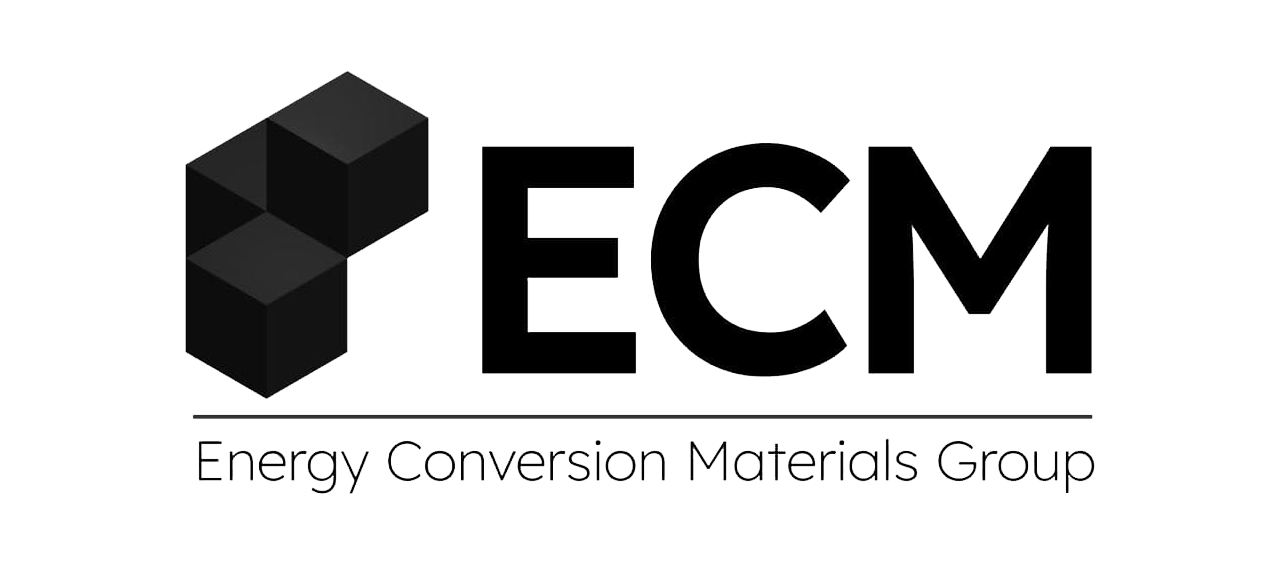Tetrahedrites
Sulphur Cu12Sb4S13 and phosphide Ag6Ge10P12 tetrahedrites
In recent years, the interest of several leading research groups has focused on materials in the tetrahedrite group. They occur naturally as a mineral with the formula Cu12Sb4S13. They crystallize in the cubic structure, space group I-43m, and have a complex crystal structure with an unit cell consisting of 58 atoms (Fig 1). The source of very low thermal conductivity of tetrahedrites (0.5 W∙m-1K-1 T> 300 K) is anharmonic vibrations of Cu due to lone pair of electrons interactions localized at antimony. Appropriate doping allowed to raise the ZTmax of these materials from ZTmax ≈ 0.6 - 0.7 for the undoped compound to ZTmax = 1.13 (T = 575 K) for Cu11MnSb4S13 [1,2].
Fig. 1. Crystal structure of sulphide tetrahedrite.
Equally interesting, from the perspective of thermoelectric properties, is the tetrahedral phosphide with the formula Ag6Ge10P12 [3]. It exhibits similar structural features to sulfide tetrahedrite, such as the presence of free electron pairs and strong vibrational anharmonicity of Ag atoms, which affect the naturally low thermal conductivity of less than 1.0 W∙m-1∙K-1 (T> 500 K). Unlike sulfide tetrahedrites, this compound has not been so thoroughly investigated to date, nor has its doping been studied. Nevertheless, a high value of ZTmax = 0.6 at 700 K in the undoped single crystal was achieved.
We have performed initial study on Mg and Ag doping on Cu12Sb4S13. Doping had an effect on the change of the lattice parameter, which indirectly indicates the incorporation of the dopant into the material structure (Fig 2). The doping with Mg, caused an increase in the lattice parameter and at the same time a decomposition into two phases with a tetrahedral structure, with a large lattice constant. The significant increase in lattice parameter by the small Mg2+ ion suggests that Mg most likely occupies the interstitial position.
Fig. 2. X-ray diffraction patterns and lattice parameter vs. dopant concentration for sulfide tetrahedrites.
For Ag doping, the increase in the lattice parameter is much smaller, which can be attributed to the substitution of Cu by a slightly larger Ag+ ion. The obtained values of Seebeck coefficient and electrical conductivity of Mg doped samples and their temperature dependence are similar to literature [1,2]. Mg doping changes the dependence of the Seebeck coefficient as well as the electrical resistivity.
Careful analysis of the synthetic tetrahedrite structure shows that beside interstitial 24g site where excess Cu can be find, there is another structural void accessible in the structure, at Wyckoff position 6b which should be preferred by dopants like Mg.
Fig. 3. Calculated band structure for Mg doped sulfide tetrahedrite. The characters of the bands are depicted by respective colors (and their mixtures).
To test this hypothesis, calculations for two Mg-doped model structures with general formula Cu12Mg2Sb4S13, with magnesium placed in position 24g and 6b has been done (Fig 3). The obtained results clearly confirmed that in terms of the total energy of the system, the structure with magnesium occupying position 6b is much more favorable.
Fig. 4. XRD patterns of phosphide tetrahedrite samples.
Similar study was carried out for phosphide tetrahedrites. A series of Ag6Ge10-xInxP12 and Ag6-xCuxGe10P12 samples was obtained, where the doping of Cu, Cd, Ni was substitutional doping at the Ag position -isoelectronic, donor and acceptor, respectively, while the other dopants were intended to substitute Ge as electron acceptor (In) and electron donor (Sb, As). XRD measurements (Fig. 4) show that all of the dopants build into the tetrahedrite structure and, as expected, In, Sb and Cd cause an increase in the lattice parameter, while Ni and Cu cause a decrease. A surprisingly large increase in the lattice parameter (1%, comparable to the difference in the sulfide tetrahedrite with empty and filled voids) is observed for Cd, which may suggest that doping involves filling of the structural voids.

